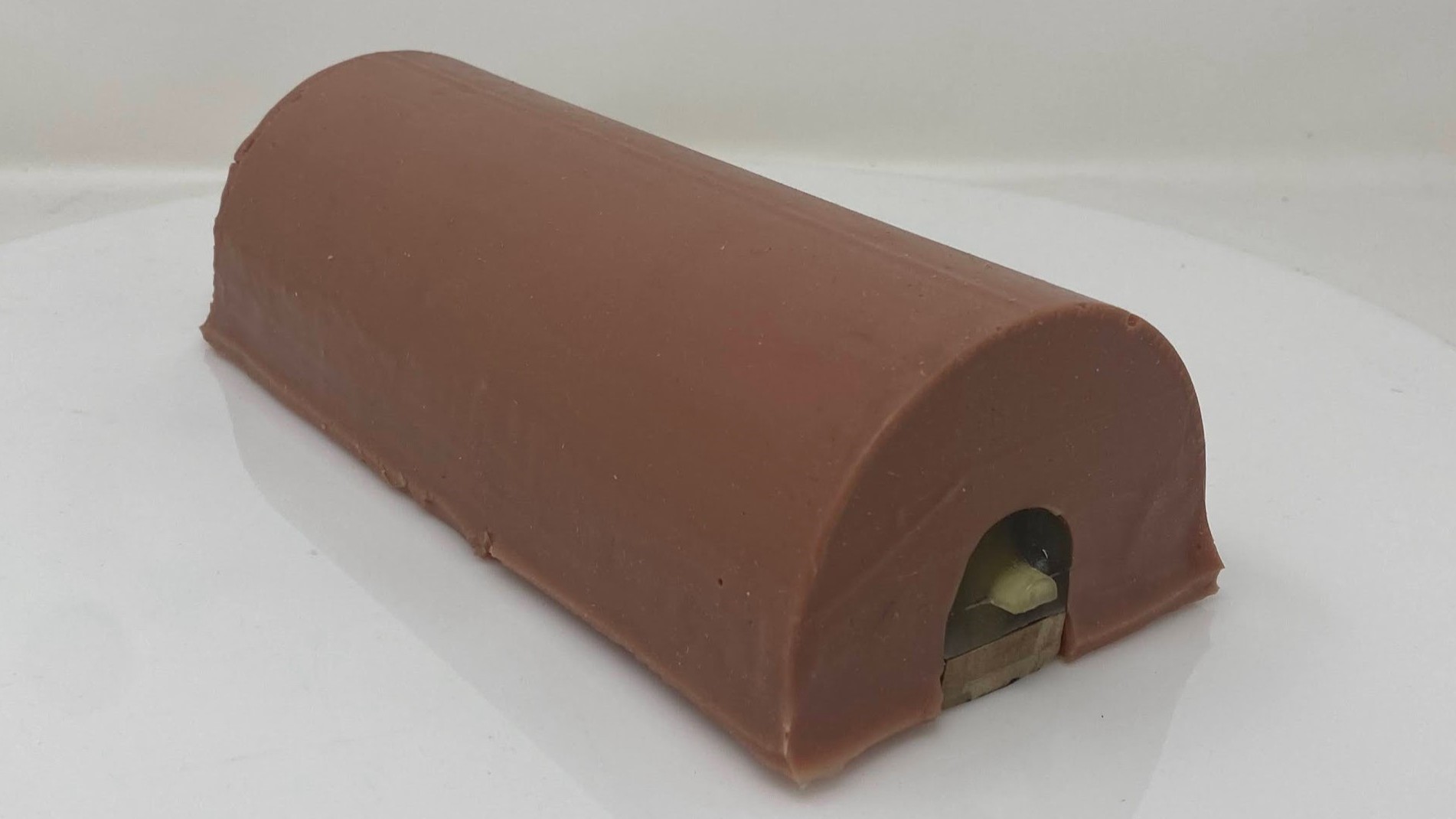Bone Biopsy Phantom
The Wond’ry · Summer 2022 - Fall 2023
Overview
Performing bone biopsies is hard. You must blindly drill through hard outer bone while expertly feeling the resistance in the drill. Once you feel you’ve made it through the hard cortical bone, you must begin taking a core sample of the inner medullary bone. If you miss that feedback and drill too deep then you must restart, causing unnecessary pain and inconvenience to the patient. Typically, training someone to perform a biopsy requires the use of cadavers or willing participants, which is cumbersome and requires unnecessary resources.
Design and Fabrication
In this project, in collaboration with VUMC’s Dr. Nick Chadwick, we made a trilayer phantom leg bone with a variable bone thicknesses. The top layer was a layer of soft silicone meant to mimic the soft tissue found in the thigh. This presented our first challenge, the stiffness of the soft tissue is variable along the thickness of the leg. The inner portion is dense with muscules, but the outer portion is fattier and softer. When deciding on a silicone, we picked one with a hardness that is an average between the two.
The innermost layer is the soft, medullary bone. This is a frustrum made in a silicone mold from a high density expanding foam. It tapers between two diameters, corresponding to the thinnest and thickest medullary bones a human would have. Once the foam is molded, it is inserted into a 2 part mold. The outer, cortical bone is an epoxy that is poured around the medullary bone. This epoxy has a durometer value that is comprable to the real thing (a bit harder than real life, but this is better for training purposes). Once this epoxy hardens, the bone nests perfectly within the soft tissue layer.
Results
The benefits of this training medium cannot be overstated. It can rest on any old shelf without special care, it can simulate all conditions of bone, and it can be reused and repurposed as needed. The soft tissue can be replaced if it is worn, and the bone can be repoured and replaced once it is swiss-cheese. It would be cheap to reproduce and easy to make in-house.
This project is currently in the process of recieving a utility patent, US Patent application no. 18/309,362. I am listed as an inventor, which is quite exciting!
